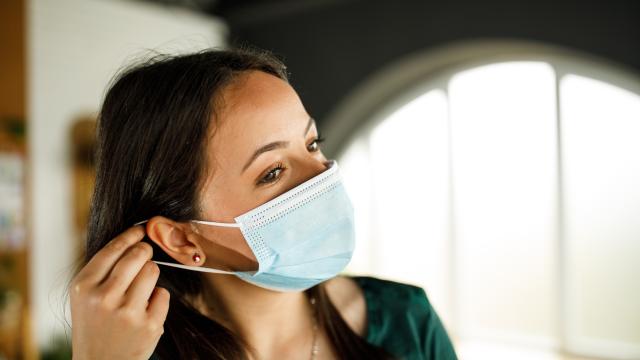UPDATE: On September 30, it was announced that rules regarding mandatory isolation for positive COVID-19 cases would be scrapped across Australia as of October 14.
The ABC has reported that National Cabinet announced it would be dropping the recently-reduced isolation period of 5 days, as we covered below, and stated that individual states and territories would be responsible for how they address the new change.
Per the ABC, there will be efforts made to protect more vulnerable individuals and those in high-risk settings, stating that financial support will continue for certain workers, those in aged care, disability care, Aboriginal health care and hospital care.
Aside from those groups, Pandemic Leave and payments associated with that will end on October 14 also.
Prime Minister Albanese touched on this, sharing that:
“The pandemic leave disaster payments will end at that time as well, with the exception of people in high-risk settings, which need to be given particular support.”
“So, aged care, health care, the measures, disability care, the areas that have been previously identified,” he said.
Chief Medical Officer Paul Kelly said of the changes that “It does not in any way suggest that the pandemic is finished.”
“We will almost certainly see future peaks of the virus into the future, as we have seen earlier in this year.
“However, at the moment, we have very low rates of … cases, hospitalisations, intensive care admissions, aged-care outbreaks and various other measures that we have been following very closely,” he said.
He continued, sharing that part of his recommendation comes from Australia’s relatively “high hybrid immunity” from high vaccination rates and previous infections.
There were also points made that should cases increase, rules around isolation will be reconsidered.
Original reporting (last updated September 20): Prime Minister Anthony Albanese announced in August, after a national cabinet meeting, that a number of COVID-19 rules would be changing for Australians. Namely, in the space of isolation periods for folks with positive COVID-19 results and mask-wearing.
Since then, we’ve also had an update on pandemic leave and the rules around that.
Here’s everything you need to know about what was announced.
Australia’s latest updates on COVID-19 isolation
As of Friday, September 9, 2022, the COVID-19 isolation period for asymptomatic individuals has been reduced from 7 days to 5 days. This excludes people working in high-risk settings, the Prime Minister shared.
“Clearly, if you have symptoms, we want people to stay home,” he said during a press conference on the changes.
“What we want to do is make sure that government responds to changed circumstances,” Albanese added. He shared that as “COVID is going to be around for a considerable period of time,” restriction recommendations will continue to be reviewed over time.
“We will continue to assess these issues and what restrictions are appropriate at any point in time,” he said.
Mask rule changes
In addition to the news on changing COVID-19 isolation rules, the national cabinet agreed to remove mask-wearing rules on domestic flights as of September 9.
The latest in this space, however, is NSW-specific. The NSW government has announced that as of September 21, masks will no longer be mandatory on public transport or in taxis or ride-share options.
However, despite this rule change, Premier Dominic Perrottet shared that it is suggested you wear a mask in areas where you cannot physically distance, or in high-risk settings.
South Australia has also dropped mask mandates for public transport in response to fewer COVID-19 cases, the ABC reports.
Pandemic Leave updates
When Albanese made his initial statements about isolation and mask-wearing rules, he noted that pandemic leave would be revisited shortly. On September 14, we received news on that front.
The update is that as long as mandatory isolation periods are in place, COVID-19 pandemic leave will be kept in place.
As the ABC has shared, the Prime Minister shared the following:
“While the government requires mandated isolation, the government has a responsibility to provide support,” Albanese said.
“We remain obviously of the view if people are sick, whether from COVID or from other health issues, they should not be at work.”
Per the Services Australia website, as of September 9, you are eligible for pandemic leave payments if you are required to self-isolate or quarantine due to COVID-19 or if you are a close contact and you work in a high-risk workplace, lost at least 8 hours work, or a full day’s pay in your 7-day isolation period.
You must also fit the below:
- you’re at least 17 years old and live in Australia
- you’re an Australian resident or hold a visa that gives you the right to work in Australia
- you’re living in Australia during your isolation, quarantine or caring period
- you’re living in Australia at the time of your claim
- you have no sick leave entitlements, including pandemic sick leave, personal leave or leave to care for another person
- you have liquid assets of less than $10,000 on the first day of the period you’re claiming for
When it comes to how much you can get, here is what Services Australia says:
If you work in a high risk workplace and you’re unable to work during your 7 day isolation period, we’ll pay you:
- $450 if you lost at least 8 hours or a full day’s pay, but less than 20 hours
- $750 if you lost 20 hours or more of work.
If you don’t work in a high risk workplace and you’re unable to work during your 5 day isolation period, we’ll pay you:
- $450 if you lost at least 8 hours or a full day’s work, and less than 20 hours
- $540 if you lost 20 hours or more of work.
This article has been updated since its original publish date to include COVID pandemic leave changes and news about NSW mask rules.

Leave a Reply
You must be logged in to post a comment.